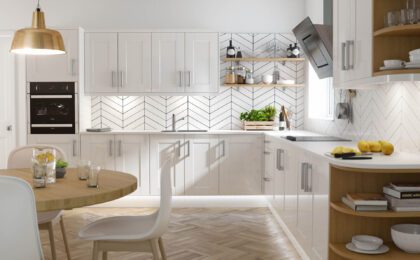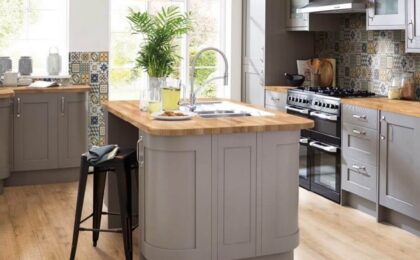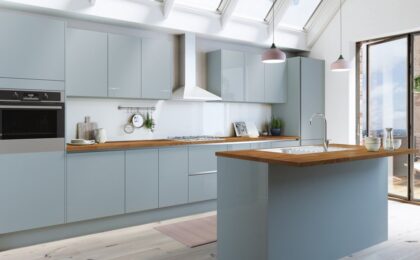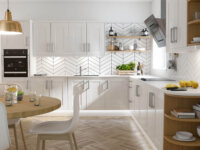Kitchen lighting is a crucial aspect of design that impacts both the functionality and aesthetics of the space. Here’s a comprehensive guide covering everything you need to know about kitchen lighting:
- Types of Kitchen Lighting:
- Task Lighting: Provides focused illumination for specific work areas such as countertops, sinks, and stovetops. Under-cabinet lighting and pendant lights are common choices.
- Ambient Lighting: Creates overall illumination, ensuring a well-lit environment. Ceiling-mounted fixtures like recessed lights or chandeliers contribute to ambient lighting.
- Accent Lighting: Adds drama and highlights specific features like artwork or architectural elements. Track lighting or adjustable recessed lights are often used for accent lighting.
- Layered Lighting Design:
- Incorporate a combination of task, ambient, and accent lighting to create a layered effect. This ensures that different areas of the kitchen receive appropriate lighting for their functions.
- Natural Light Integration:
- Maximize natural light through windows and doors. Consider window treatments that allow flexibility in controlling light levels.
- Fixture Placement:
- Strategically place fixtures to eliminate shadows in key work areas. Pendant lights over the kitchen island and under-cabinet lighting are popular choices for task lighting.
- Lighting Controls:
- Install dimmer switches to adjust the intensity of the lighting according to the time of day and specific needs. This enhances flexibility and energy efficiency.
- Energy-Efficient Lighting:
- Opt for LED or CFL bulbs to save energy and reduce utility costs. These options also have a longer lifespan compared to traditional incandescent bulbs.
- Consider Color Temperature:
- Choose the right color temperature for your lighting. Warmer tones (around 2700-3000 Kelvin) create a cozy atmosphere, while cooler tones (4000 Kelvin and above) provide a more vibrant, daylight-like feel.
- Statement Lighting Fixtures:
- Use unique or stylish fixtures to make a visual statement. A decorative chandelier or pendant lights can serve as focal points in the kitchen.
- Lighting for Specific Areas:
- Illuminate specific areas like the kitchen sink, stove, or dining table with dedicated fixtures. This ensures adequate light for various tasks.
- Maintenance and Upkeep:
- Regularly clean and maintain your lighting fixtures to ensure optimal performance. Replace bulbs promptly when they burn out.
By carefully planning and implementing a well-thought-out lighting design, you can enhance the functionality, atmosphere, and overall appeal of your kitchen.












